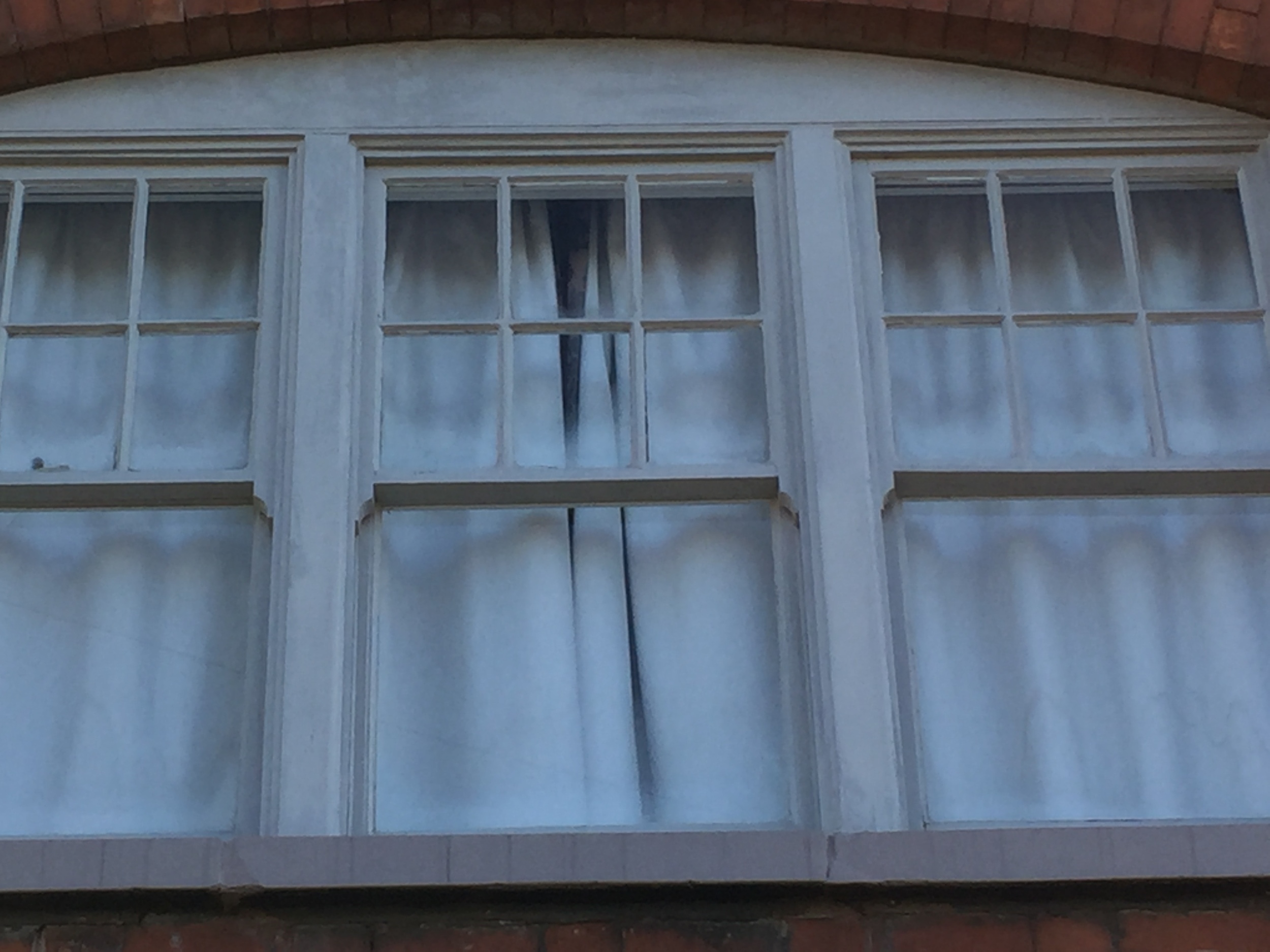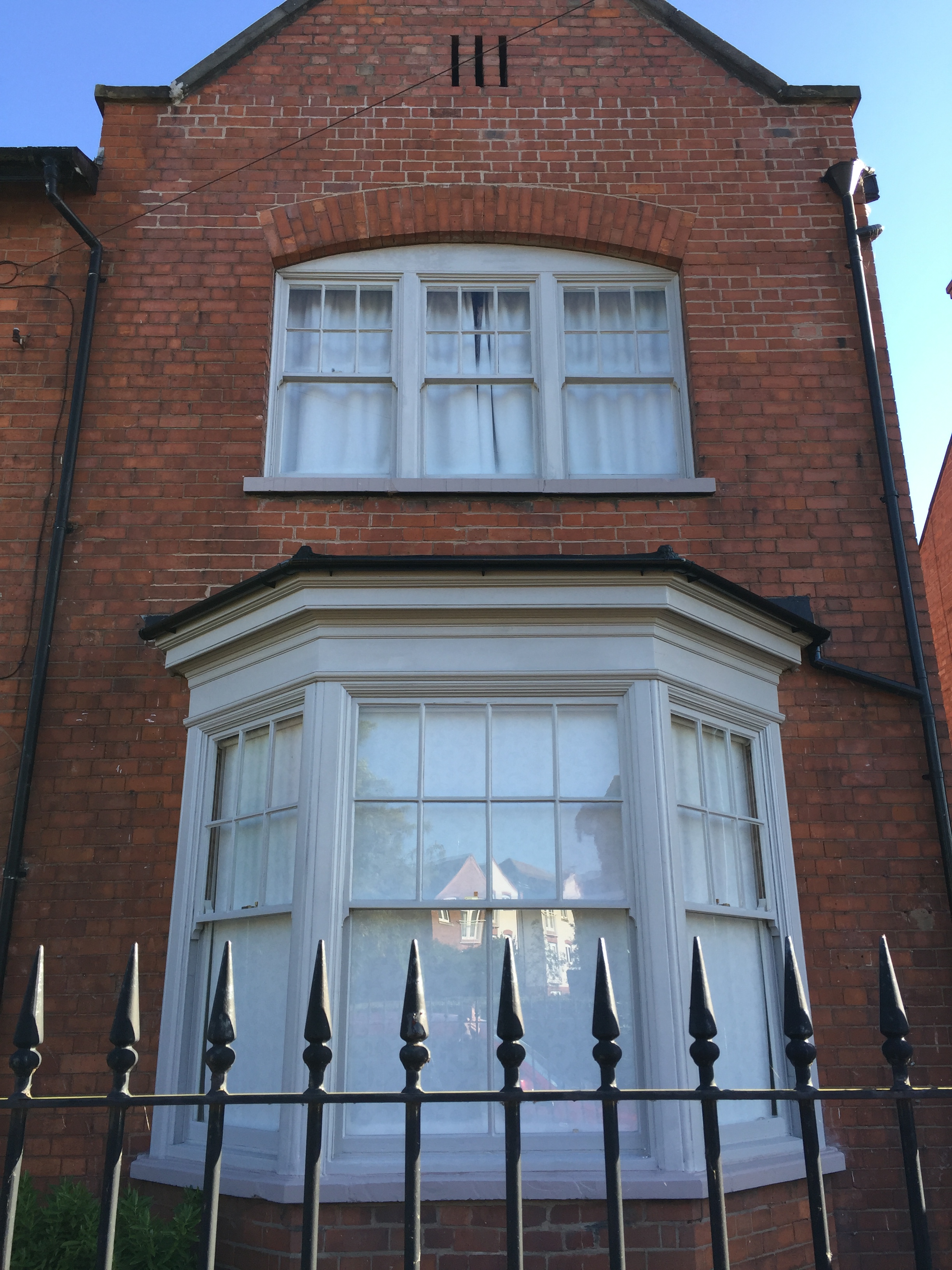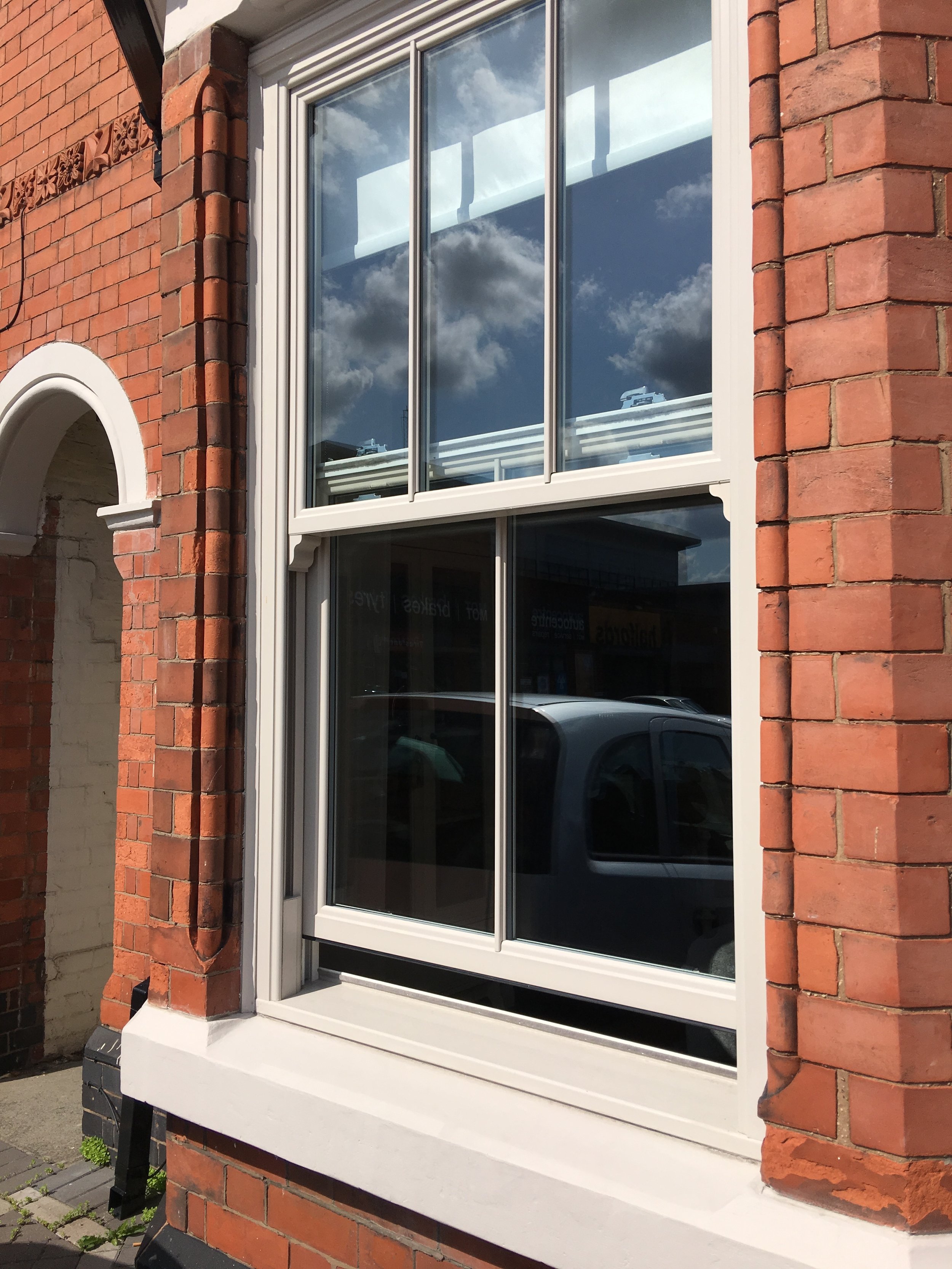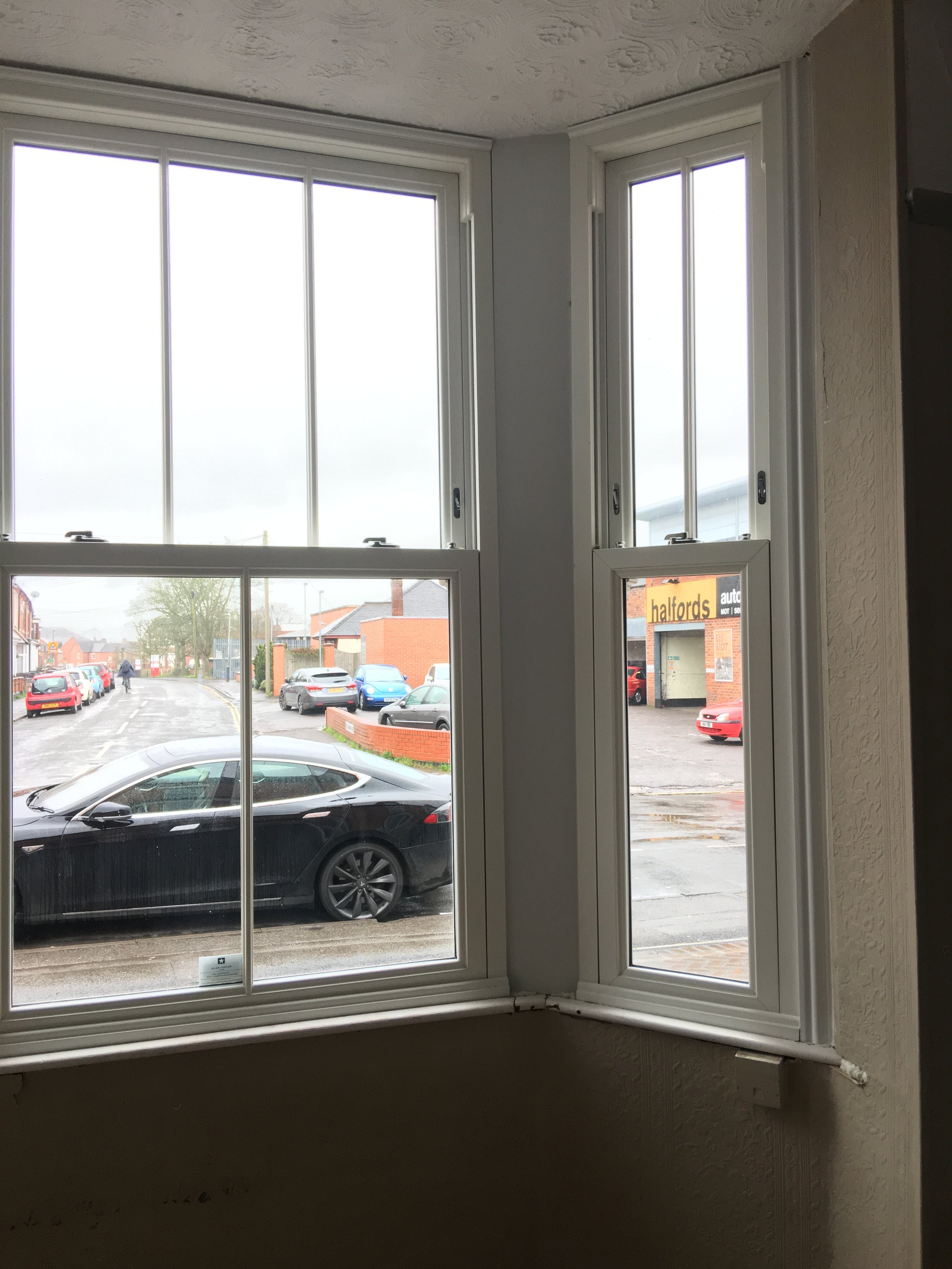Sash Window Condensation is back..
Only late september, and just 5 C last night in Coventry, but already the depressing bloom of condensation has started forming on single glazed panes of sash windows in period homes throughout our area.
This is a beautiful Victorian semi in Earlsdon that we restored back in 2006; our family home for a few years - but unfortunately we’d kept with the previous owners secondary glazing, which never worked very well
I happened to be driving past early this morning and took these pictures - lots of condensation already appearing on the coldest parts of the glass. We sold the property a while back now but I remember from our time living there, the only way to manage the problem was to keep the windows slightly open at night.
Condensation forms when air on the inside of the glass reaches the dew point - which for most centrally heated homes is about 12C. Air, saturated with moisture (either from showers, our normal breathing out , or maybe a rainy day when its turned cold in the evening) hits a cold surface.
There are several ways to reduce or stop condensation but the key principal is to either increase the heat (warm air is happy to hold onto moisture longer before dumping it as condensation), or reduce the humidity level (replace moist air with dry air).
Turning up your heating is effective, but not hugely practical, so anti-condensation measures normally concentrate on improving ventilation - as follows;
Stop air directly around the window becoming locally too cold or water saturated by opening curtains or blinds slightly
Open the window a little to ventilate the room - air inside any property under occupation is almost always more humid compared with air outside. This is moisture from cooking, showers, but also - particularly in bedrooms - from our breathing and perspiration.
Check air bricks and open these up if they have been covered - most pre-1920's will have had an exposed air brick higher up on an outside wall to aid chimney ventilation
Check unused chimneys to ensure some ventilation is in place (blocked up chimneys should always have small air bricks placed in the room side, with an air cowl fitted to the chimney pot to guard against condensation forming inside the chimney space)
Fit a mechanical trickle vent fan, or better still buy a heat recovery vent (hrv) unit. These are really effective but pricey at c.£300 per room and they work by passing the warmer stale air from inside through a heat exchanger that warms the cold air coming in at the same time from outside. HRV's are often referred to as 'anti condensation fans' as they work extremely well - but check the dB value of the trickle setting as the cheaper ones tend to be alot noiser - and not suitable for bedrooms.
a slightly cheaper option that we’ve found does a job pretty well, is to go for a good quality humidistat extractor fan - this one from vent axia is excellent as it’s programmable from an app, looks smart, and has a great trickle vent setting that ensures you get regular air changes even on those cold days/nights when there’s no wind around to suck moist air out via regular air bricks or vent grills.
Secondary glazing solutions can work, although personally I'm not a fan as they have to be completely air tight into the room to work effectively - and it's only the really expensive systems that can achieve this. They also don't do much for the aesthetics of a room, and are terribly difficult to keep clean.
Window upgrade systems are sold by various companies as ways to combat condensation; window filming rarely works and looks terrible however carefully it's done, draughtproofing makes you feel warmer but will make condensation problems worse as it's reducing ventilation, and retro-fitting double glazed glass into original timber sashes is eye wateringly expensive as the weighted balance system also has to be changed.
upvc victorian replica sash windows we recently fitted to a property in dudley, west midlands.
Tbh though, (and you probably already guessed I’d be saying this!) the only option that really works satisfactorily is to go with good quality replacement upvc sash windows - zero maintenance, condensation and draught free, and able to cope with extremely high levels of moisture and temperature difference inside to out.
The process is relatively cheap (we charge c. £600 per window) - and it's really easy to get a good looking job, done quickly. Existing sash boxes can be left in situ, with windows specified to pretty much exactly match the period look of your originals.
Use the form below to drop us a line - we’re happy to help with advice even if your’e outside of our Midlands area.






